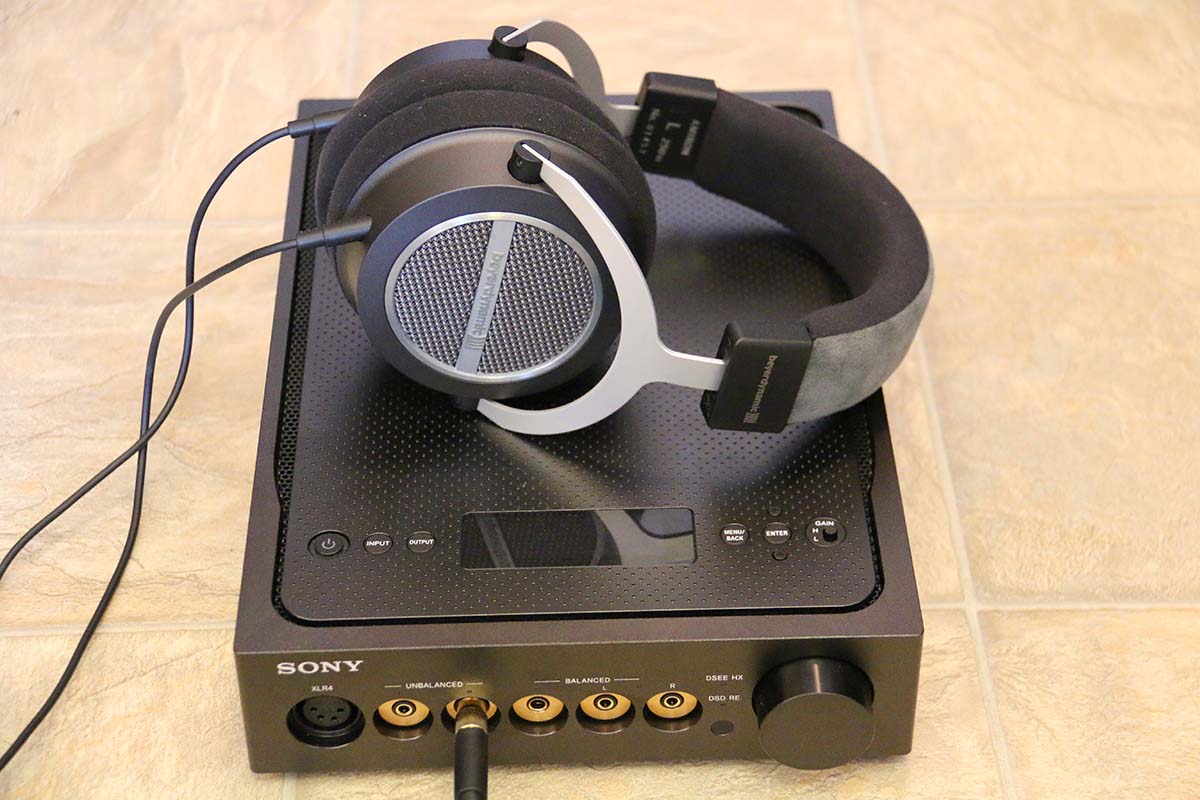
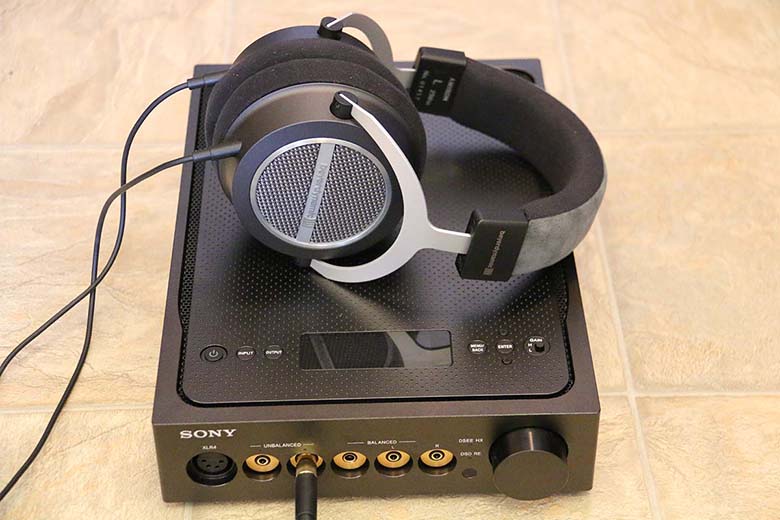
The Master Switch


The Master Switch
Dear Sony marketing department: can we talk? We want to figure out how your minds work. Because how do you go from coming up with iconic, game-changing product names like PlayStation and WalkMan to creating something named the TA-ZH1ES? This isn’t a TV, which is a product category known for its abstruse and pointless names. This isn’t a piece of the space shuttle. It’s a headphone amp and DAC – and a very, very good one at that. Couldn’t come up with anything more catchy than the TA-ZH1ES? In this review, we break down the TA-ZH1ES’s sound, design, packaging and accessories, specs and more. To see how it stacks up, see our list of the best headphone amps.
If we have to refer to this thing as the Sony TA-ZH1ES for the rest of this review, we’re going to throw our monitor out the window. So let’s do what Sony’s marketing department didn’t. Let’s come up with a catchy name. Let’s call it… The Tazzy. You’re welcome, guys. However, terrible name does not equal terrible product. The Tazzy looks excellent, and the level of attention given to the exterior is echoed in its interior. Put simply: this is an amplifier with a lot going on in its circuitry.
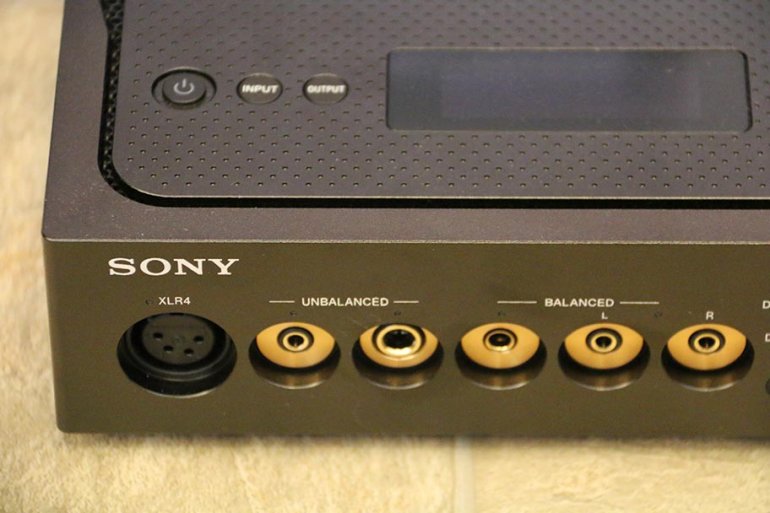
Without going into too much detail, this is a hybrid amplifier, incorporating both digital and analog components. But see, The Tazzy does something a little more interesting. At the final stage of amplification, the signals from the digital and analog amplifiers are compared, and corrected for errors. This procedure, helped along by a significantly advanced field-programmable gate array processor, is almost unbelievably good at achieving its goal: crystal clear, distortion free sound. We tested The Tazzy with a variety of headphones, all of which had different impedances - the amp takes cans ranging from 12 to 600 ohms, without any trouble, including our standard testing model, Beyerdynamic Amiron Home (full review here) We found that the XLR connector gave slightly better sound, although only slightly, and that the differences between the rest of the outputs were minimal.
Our love for gooey, analog tube sound has been well-documented here at TMS, but that doesn’t mean we are capable of appreciating audio recordings that are delivered as closely to the source material as possible. The sound of The Tazzy left us absolutely awestruck. There is zero distortion. Zero. Well, all right, there probably is some at the very basic level, but as far as we’re concerned, it’s inaudible. The noise floor is just impossible to pick out. And the actual audio that plays through The Tazzy has a transparency and clarity that blew us away. We could hear every note, every detail. Every single element of the track was laid out, as if under glass. Compared to lesser amps/DAC combos, this is just on another level. The combination of that error correction and a truly genius Digital-to-Analog Converter (DAC) is something that anybody even remotely interested in sound needs to hear.
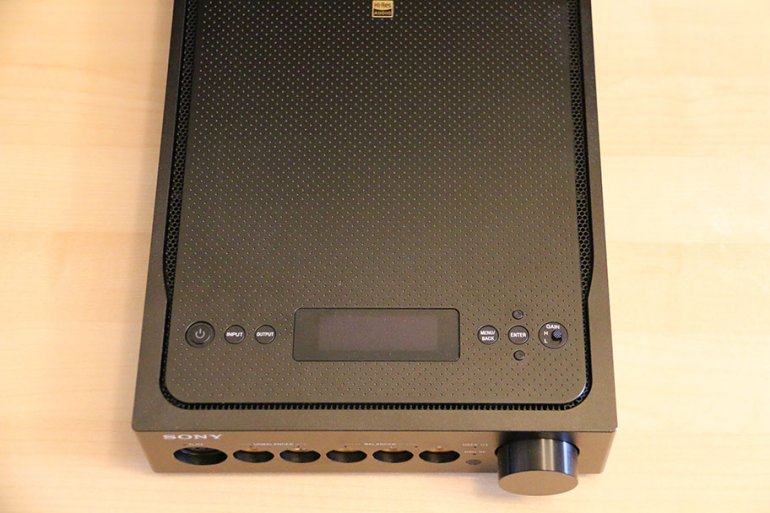
And that’s before you actually play some DSD audio through The Tazzy. We explain DSD in full here, but essentially, it’s digital sound of extremely high quality. Putting true DSD audio into The Tazzy is…unbelievable. Up until that point, we didn’t think the clarity could get any better, but it did. At that point, we didn’t just hear every single element of the track: we were in the room with the musicians while they recorded it. This kind of sound just blows us away. Purely on a technical level, getting something to be this clear without the benefit of five-figure amp circuitry is an absolutely staggering achievement. Whether their marketing department can come up with good names or not, Sony’s engineers deserve a major high-five here.
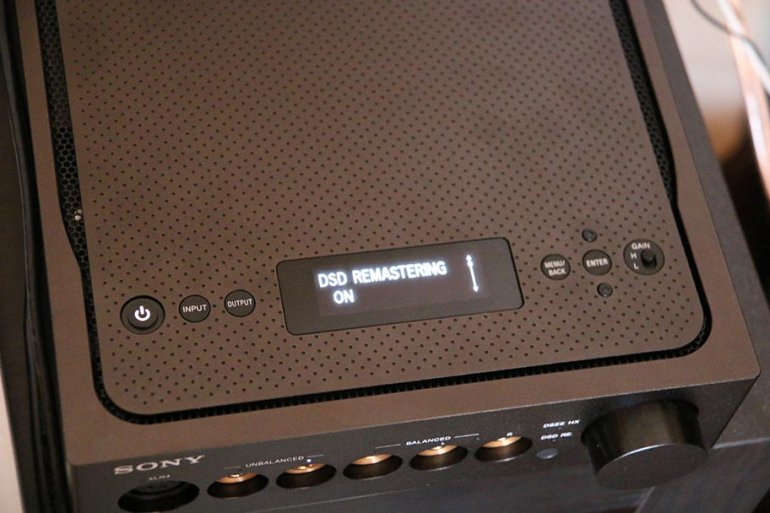
However: there were a couple of elements which we feel didn’t work quite as well. Sony makes a big deal about its DSD Remastering tech, which converts existing files into DSD Audio up to 11.2MHz, and its DSEE HX (Digital Sound Enhancement Engine) which is essentially an upscaling preset, allowing you to heighten the quality of songs with an emphasis on female or male vocals, drums, and strings. We tried these settings on a variety of songs, and in all honesty, we can say that the differences are so subtle as to be almost unnoticeable. That’s not to say that it wouldn’t work well on the right kind of material, but we didn’t find any, and as such, we don’t think these two options make an enormous difference. Compare that to the filters on the Chord Hugo 2 (full review soon), which make a real and audible difference. It’s also worth pointing out that the Hugo is cheaper than the $2,800 Tazzy, by about $500.
When the base sound is already spectacular, any advantages given by these two options are going to be incremental at best. We also couldn’t say we heard a huge change with the Phase Linearizer, either, which is another option you have at your disposal, one that replicates the sound of an analog amp. Which seems a bit pointless, because why would you buy a Tazzy if you wanted an analog amp? Other than that, though: golden. Or, since it’s all about clarity here: crystal.

The TA-ZH1ES doesn’t, come to think of it, look like a Tazzy. Something named The Tazzy feels like it should be one of those cute little wireless speakers that slip into a pocket and have color options like Indigo Explosion and Violet Splurge. This is not a cute little wireless speaker. This is a thing that very much means business. Even a cursory glance will tell you that, as you take in the eye-catching gold ports and a subtle set of controls. It’s part of Sony’s Signature Series of audio products, which also includes the excellent MDR-Z1R headphones. Despite the unmemorable names, this is very clearly a product range that Sony believes in, and there’s no question that the Tazzy has received a significant amount of attention, design-wise.
The first thing to notice is that you get a truly staggering range of inputs and outputs, all of which are clearly labelled and easy-to-use. Round the back, you’ve got the choice of four inputs – a USB-B, an optical, a coax, and a line level - as well as a pre-out if you want to add this to an established signal chain. All the outputs are around the front. Not only do you get the standard unbalanced 3.5mm and 6.3mm outputs, but you also get a trio of balanced ones (a 4.4 mm and two three-pole mini plugs) as well as an XLR4 out. The message here: you can listen to anything, no matter what plug is on the end of it. For comparison, the Auris HA2 SE - another equally-popular amp - doesn’t have nearly the same range of inputs. For sheer versatility and flexibility, this is an amp that is extremely hard to beat. Did we mention that the volume knob is great? The volume knob is great. Big, grippable, with enough resistance to make a difference.
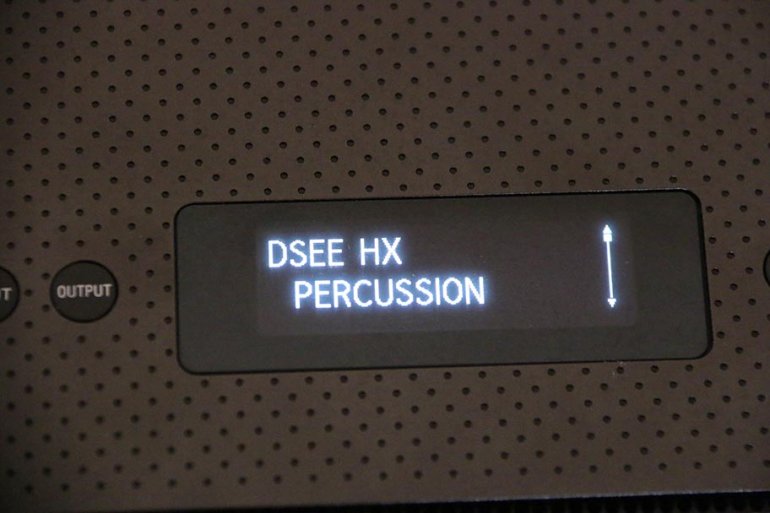
The biggest, and possibly best, surprise about The Tazzy was just how easy it was to use. When an amp costs damn near $3,000, you expect to have to get to grips with it a little bit. But navigating the menu system, using the recessed buttons on the top of the unit, was simplicity itself. As long as you’re familiar with the audio terminology, which is surely no more than a quick Google search away, or a page through the manual, it will take less than two minutes to get the audio configurations you want. The menus that appear on the digital display are laid out in a sensible, intuitive manner, and the display is very good at telling you only what you need to know. This is, quite simply, an amplifier that a chimpanzee could use. And we mean that in the best possible way.
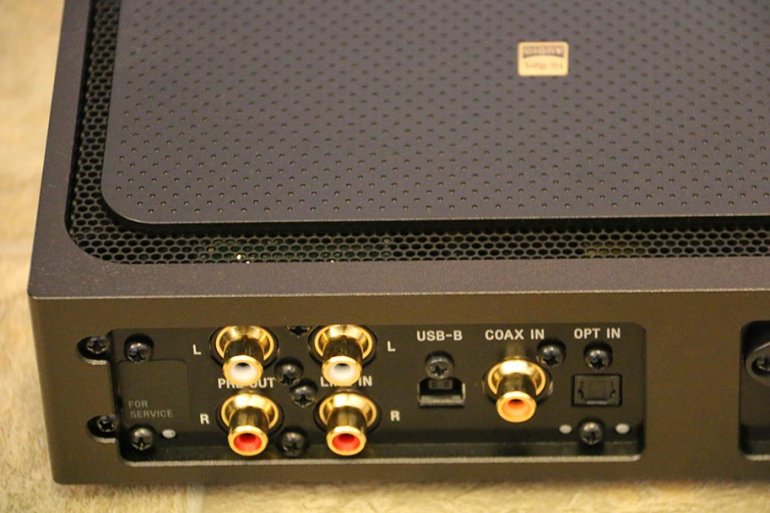
It’s got a couple of other things worth mentioning. The first is a handy and straightforward gain switch on the top of the unit, allowing you to select high or low gain. The second is a dedicated input slot for the Sony Walkman we mentioned earlier – no, we’re not going to refer to it by its robot name. We didn’t actually have a Walkman available to test this amplifier with, but we can’t see there being any issue with getting it to work – not when selecting an input (helped along by the handy lights that dot the unit) is the matter of a single button press. It also comes with a very handy (although slightly redundant) remote control, which we’ll go into in a little bit more detail in the Accessories section below. Design-wise, we have almost nothing bad to say about The Tazzy. It might look a little intimidating, and it’s certainly not going to win fans among those who love external glowing tubes, but we think it both looks and feels great. The fact that it’s an absolute cinch to use puts it over the top.
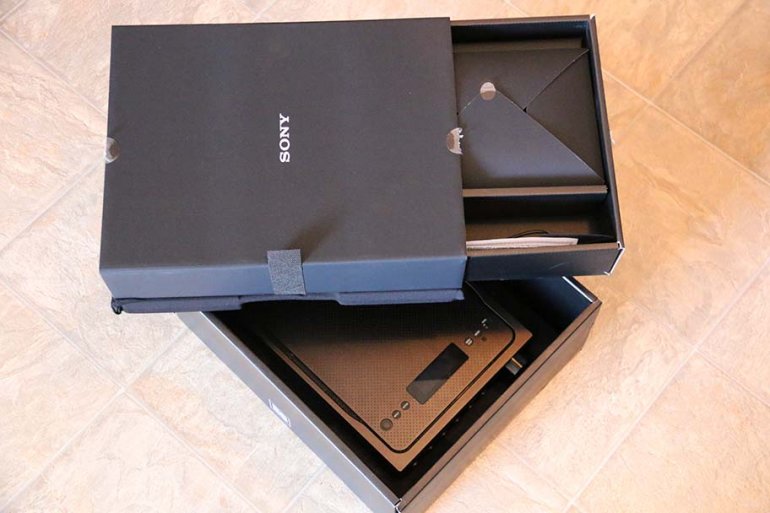
Companies of Sony’s size and reach often fall flat in the packaging department, which is an unfortunate byproduct of mass production. Not here. The design nous shown in The Tazzy extends to its packaging, which is sublime. Slide the white slipcover off, and you’re confronted with a thick-gauge, black cardboard box housing your new purchase. The amp itself is held in a fabric-covered chamber that both looks and feels fantastic, and the accessories are stored in their own drawer that slides out from the uppermost part of the packaging. Everything is beautifully presented, with a level of clarity and thought that matches the sound. It’s not quite at AudioQuest levels of packaging, but for something with such a boring name, it sure makes one hell of a first impression.
The most noticeable accessory that you get with The Tazzy is its remote: a slim, black affair that feels pleasantly weighty in the hand. It’s sensibly laid-out, with big volume buttons and a power button, and allows you to access several of the functions on the menu. As remotes go, it’s very decent – Sony even supply the batteries. It reminded us of another much cheaper amp, the excellent Burson Audio PLAY (full review here), which came with a similarly slim remote that worked really well. The Burson, if you’re interested, goes for around $599 for the most beefed-up model - around a quarter of the price of a TA-ZH1ES.
Other than that, the accessories are fairly standard. You get a power cable, obviously, as well as a connector for a Sony Walkman. The company also include a microfibre cleaning cloth. There’s also an unexpectedly generous five year warranty on parts and labour, although at this price, it makes sense. Worth noting: as a review model, our Tazzy was missing its manual, but we found one online without too much trouble, and it was relatively simple to understand.
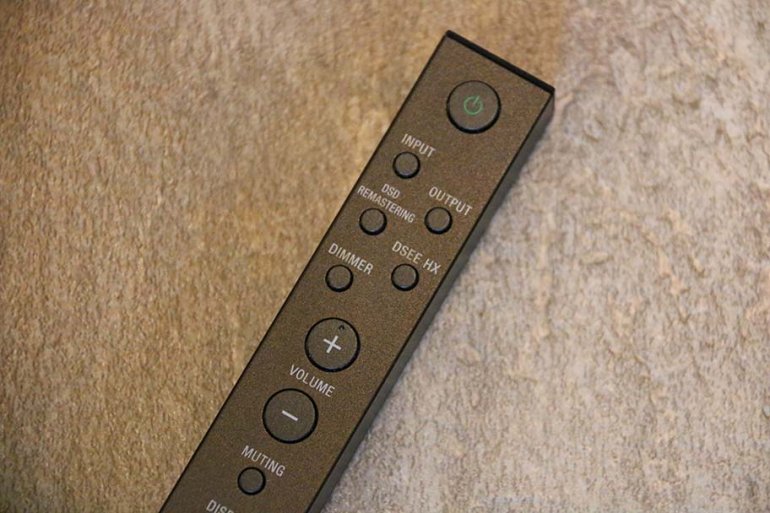
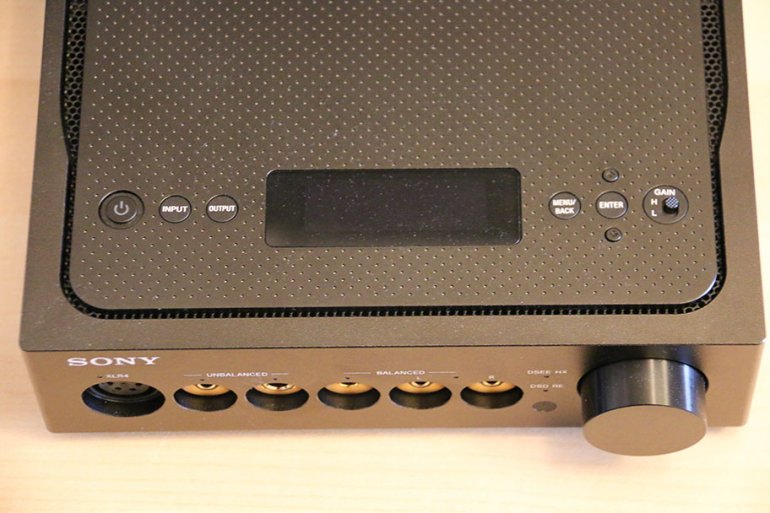
| Amp | Price | Weight | Dimensions | RHI* | WPC** | DAC*** |
|---|---|---|---|---|---|---|
| Sony TA-ZH1ES | $2,800 | 9.7lbs | 12.4” x 8.3” x 2.6” | 12-600Ω | 1.2 / 32Ω | Yes |
| Benchmark DAC3 HGC | $2,195 | 3lbs | 9.5" x 9.3" x 1.7" | Unknown | 1.25 / 30Ω | Yes |
| Marantz HD-DAC1 | $799 | 11lbs | 10.6" x 9.8" x 3.5" | Up to 600Ω | 0.8 / 32Ω | Yes |
| Audio-Technica AT-HA5050H | $5,999 | 24.3lbs | 13.1" x 12.9" x 3.9" | 16-600Ω | 1 / 32Ω | Yes |
| Sony PHA-3 | $999 | 10.58oz | 3.15" × 1.14" × 5.53" | 8-600Ω | Unknown | Yes |
*RHI = Recommended Headphone Impedance
**WPC = Watts Per Channel
***DAC = Digital-to-Analog Converter
Want Even More Master Switch? Sign Up For Our Weekly Newsletter!
It’s actually quite rare to find hybrid amp/DACs at the price and quality level of The Tazzy, but one of them, if you squint slightly, is the Benchmark DAC3 HGC (full review here) which can also function as a very capable preamplifier. Despite a workmanlike exterior that probably isn’t going to touch the Sony for luxury, it’s got magnificent sound, driven by a superlative DAC. We’ll report back, but at the moment, we’ve got no hesitation in offering this as an excellent alternative - although you will need to supply a power amp. It’s also a touch cheaper than the Tazzy, at $2,100 to the Tazzy’s $2,200.
The Marantz HD-DAC1 is another combination headphone amp and DAC that we think matches the Sony in design. Its circular display and wooden accents give it a luxurious air, and it feels like it should cost far more than it does. The sound is good, solid, driven by some seriously clever circuitry to produce audio that has real depth and drive. Nothing on the clarity of The Tazzy, but it still sounds good, and will do well on any mid-range headphone setup. If you can’t reach Sony prices - the HD-DAC1 goes for $800 - but still want some next-level sound, check this one out.
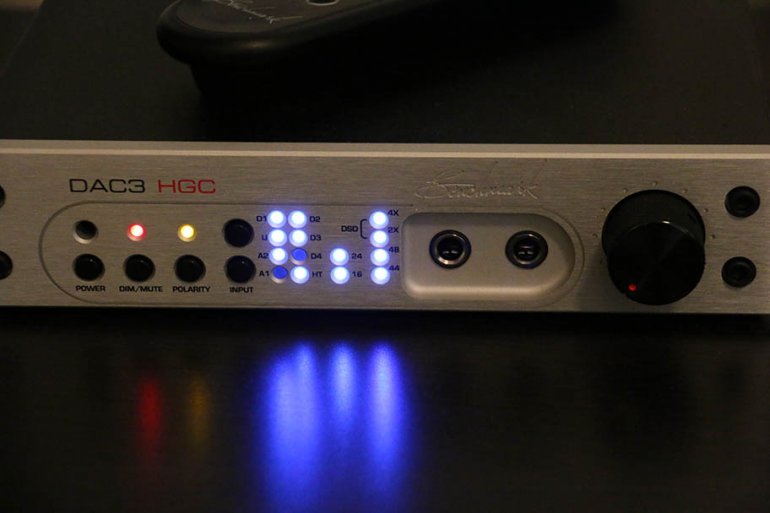
Another option: the Audio-Technica AT-HA5050H. It’s a little old-school, but finding comparable models to The Tazzy is actually quite tricky, and this is one of the better options. A full hybrid amplifier, complete with DAC, the AT-HA5050H doesn’t offer the level of DSD functionality, but it has some truly inspiring sound, as well as a look-at-me quality thanks to the attractive analog meters. It also has separate headphone impedance selectors, and eight (!) output jacks. For when you have a party and your speakers blow. That being said, the price also demands you take a second look - at $5,999, it’s not cheap, nearly triple the cost of the Tazzy. And Audio-Technica, apparently, is guilty of the same crime as Sony when it comes to thinking up names. We’re calling this one The Hazzy.
Weirdly, the Tazzy is one of the only high-end amps that Sony make. Let’s say you want some of that Sony goodness, but don’t want to pay huge prices. How about the $998 PHA-3? It has the same sleek design as the Tazzy, and some of the same functionality - including DSEE HX. But it’s also comparatively portable, which is always nice to see. We haven’t done a full test of this amp, but we have heard it before, and it rocks.
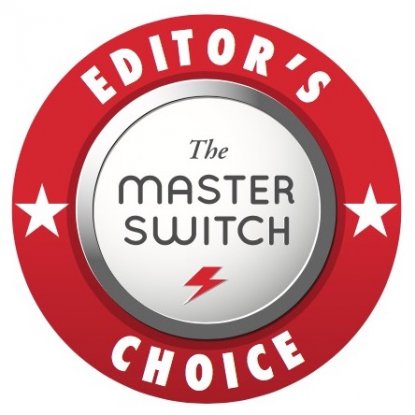
Anyway. Despite its flaws, and despite the boring name, there’s no question that the TA-ZH1ES is one of the best hybrid amps available. Actually, scratch that: this is one of the best amps available, of any type, period. While the substantial cost may put some people off, and it’s only really worth investing in if you are serious about your audio, it’s one of the most rewarding amps we’ve ever tried. It has breathtaking sound, absolutely stunning clarity, the kind of thing we’d expect to pay a lot more for. Couple this with a good pair of headphones, and a decent source (like the aforementioned DSD), or a turntable, and you’ll have one of the best setups we can think of. We didn’t expect it to be so easy-to-use, either, but it was, and we loved it all the more for that. It might cost four figures, but this is a genuinely extraordinary amp, and one we highly recommend. Go Tazzy.
See the Sony TA-ZH1ES See the Best Headphone Amps